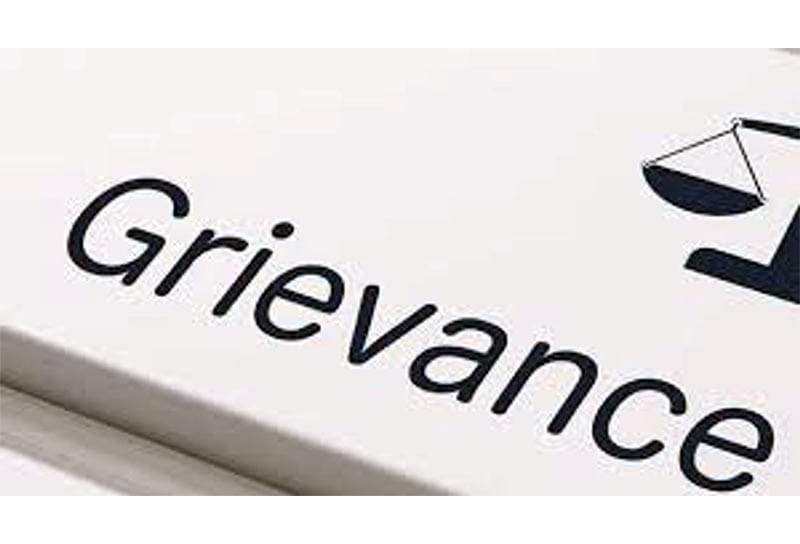The Centre has reduced the redressal time for public grievances raised on a dedicated portal from the existing 30 days to 21 days.
In the revised guidelines, the government also recommended appointing dedicated officers to manage complaints and emphasized a “whole of government approach” for addressing grievances. “This means that under no circumstances should a grievance be closed with the response ‘Does not pertain to this Ministry/Department/Office’ or similar wording. Instead, efforts must be made to transfer the grievance to the appropriate authority if it falls outside the jurisdiction of the receiving Ministry,” stated the order issued by the Department of Administrative Reforms and Public Grievances (DARPG).
The order advised that in ministries or departments where a significant number of public grievances are received, a dedicated nodal officer with an independent charge at a sufficient rank should be appointed to ensure timely and quality resolution of these grievances.
The order mentioning revised guidelines was issued following the directions of Prime Minister Narendra Modi, given during his interaction with the secretaries to the Government of India on June 29.
Following these directives, the DARPG undertook a review of existing processes to make the Centralised Public Grievance Redress and Monitoring System (CPGRAMS)—an online portal that allows people to raise complaints against government departments—”more sensitive, accessible, and meaningful to the citizen.”
“The 10-step reforms initiated in CPGRAMS have significantly reduced the average resolution time. Keeping this in view, the maximum redressal time advised by the DARPG for cases in CPGRAMS is further reduced to 21 days,” said the order dated August 23, 2024.
In cases where the redressal requires more time, an interim reply may be given, stating the reason for the delay and the expected timeline for resolving the grievance.
“The focus of the guidelines has been to reduce the timelines for grievance redressal to 21 days and improve the quality of grievance redressal by adopting technology improvements like the integration of grievance portals, root cause analysis using AI-enabled dashboards, and assessment metrics like the Grievance Redressal Assessment Index,” said V. Srinivas, Secretary of the DARPG.
He added that the capacity building of grievance redressal officers is envisaged through state administrative training institutions.
Srinivas, a 1989-batch Indian Administrative Service (IAS) officer of the Rajasthan cadre, said the policy guidelines were formulated after detailed consultations with Ministries/Departments, State/UT governments, knowledge partners, and state administrative training institutes.
“The policy guidelines also empower citizens by providing an escalatory appeal mechanism,” he told PTI.
The appeal workflow in CPGRAMS currently requires the appointment of an officer of Additional/Joint Secretary rank as the Nodal Appellate Authority (NAA).
“Sub-Appellate Authorities (SAA) may be appointed by the Ministries/Departments under the NAA… The Appellate Authorities are required to examine the appeal independently and decide whether to allow or reject it. The appeal shall be disposed of within a maximum of 30 days,” the order stated.
It also specified that a dedicated grievance cell shall be set up in every ministry. The cell shall be adequately staffed with resources possessing domain knowledge of the Ministry’s schemes/programmes and experience and skills in data analytics and root cause analysis of grievances.
Upon the resolution of a grievance, an SMS/email is sent to the registered mobile number and email address of the citizen. If the citizen is not satisfied with the redressal, they can provide feedback on the portal and raise an appeal.
“Going forward, feedback will be integrated with other mechanisms like WhatsApp, chatbots, etc., so that citizens who are not satisfied with their grievance redressal can file an appeal through any of these modes,” it said.
The DARPG also asked government departments to use two AI-powered analytical tools for deeper analysis of grievances.
“Public grievances are direct feedback from citizens on the performance of government programmes/policies/service delivery. Analyzing grievances provides meaningful insights and highlights areas that require specific attention. This analysis is extremely useful for driving efficiency in government programmes and policies,” the order emphasized.
Complaints relating to corruption, bribery, harassment, or any other vigilance issues shall be examined closely under the broad guidelines and timelines prescribed by the Department of Personnel and Training (DoPT) and the Central Vigilance Commission (CVC), in consultation with the Chief Vigilance Officer (CVO) of the Ministry, according to the grievance handling process annexed to the order.
If complaints are deemed valid, an acknowledgment shall be sent to the complainant. However, if the complaint is found to be false, malicious, intentional, or repeatedly filed by habitual complainants, “such complainants will be flagged and blocked in CPGRAMS,” according to the grievance handling process.



